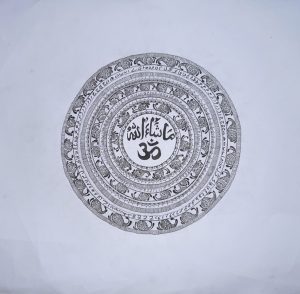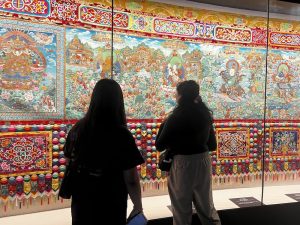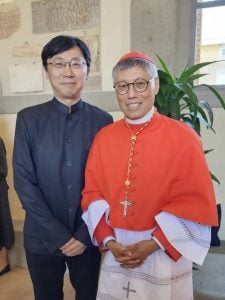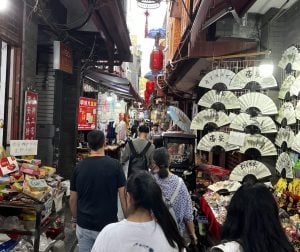
Language as Identity on the Silk Road
TBC Student Nabeeha Misbah introduces a student project made as a final for her TBC1100 course, Silk Road Excursion: a way for students to more deeply contextualize their experience after two weeks of travel westward from Beijing at the beginning of the semester.
This semester I had the privilege to go on a Silk Road excursion visiting many cities including Xi’an, Xiahe, Xining, Lanzhou, and Dunhuang. After the trip, we were tasked with projects to demonstrate what we learned and experienced. My project was heavily influenced by language, art, and religion. In the end, I created an art piece that I originally wanted to embroider but due to the length of my stay in China and an approaching deadline, I stuck with traditional pencil and pen to create my final piece.
One fascinating aspect that stuck with me about the Silk Road and its vast history is the amount of cultural exchange and the spread of language. The Arabic that native speakers speak today can be traced back as early as the 6th century. I, as a Pakistani-American speak Urdu which has elements of Arabic in spoken and written language. Furthermore, through the connection of religion, I learned to read Arabic from a young age. There are several cultures in China and in surrounding countries that have a history with the language and this aspect has been the driving force of my art piece.
Likewise, Sanskrit originated from South Asia and spread to parts of the world along the Silk Road through Buddhism. On the Silk Road, I saw many old Sanskrit sutras and religious scripts. While at the Snowland Art School, a school in Labrang where students learn traditional art for five years before graduating, I learned that the Tibetan script is based on Brahmic Sanskrit script.
I added a lot of my style to the piece, for example, the detailed designs along the rings which are inspired by South Asian henna. I used the Arabic saying, “mashallah,” because although it is an Arabic word, it is used in Urdu and several languages aside from Arabic. It means, “as good wills it” and is usually used after telling someone a compliment so as to not “jinx” that aspect of their feature or life.
Lastly, I added a Sanskrit term from Buddhism, “Om.” “Om” is an incredibly spiritual word for Buddhists and Hindus. When pronounced the way it was intended, the word exerts a strong humming sound to represent the cosmic energy and sound of the universe. I wanted to use culturally important phrases from Sanskrit and Arabic in the middle to symbolize the significance of language for cultures and religions.
In summary, the Silk Road Excursion was filled with many experiences and information learned. The Silk Road shows us the beauty of cultural exchange over centuries and across borders. With a South Asian Muslim background, I found many aspects of culture, language, and religion is very intriguing and reflected in my final Art piece. Although I do not claim to have any strong artistic background, I find that spending hours working on this piece was a fun way to finish off my Silk Road experience.







